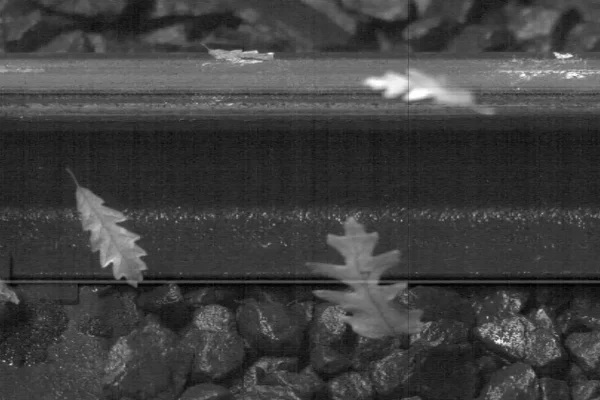08/10/2025
Getting Ready for Autumn: Tackling Low Adhesion and Leaf Fall with AIVR Intel

As autumn season settles in and the leaves continue to turn brown after a sporadic summer, rail operators across the UK once again face the seasonal challenges unique to the industry: the risk of low adhesion caused by autumn leaf fall. When leaves settle on the rails and are crushed by passing trains, they create a slick, slippery coating that drastically reduces traction. This impacts both acceleration and braking, and has contributed to serious rail incidents, such as the Salisbury incident in 2021.
In the UK, Network Rail deploys specialist trains every autumn to tackle this problem, however pinpointing exactly where, and when, treatment is most needed remains a complex task. With autumn comes mounting pressure to reduce the risk of incidents and service delays.
Remote Adhesion Monitoring
Over the last few years, One Big Circle has worked collaboratively with the wider rail industry to help change how some of these autumn challenges can be tackled. Together we developed a highly effective imaging system that has been fitted to a number of vehicles including in-service units and Network Rail vehicles such as MPVs. These vehicles, installed with AIVR Focus, capture high-definition imagery and precise locational data, enabling digital, remote inspections of railhead conditions – whilst the forward-facing cameras added context of the surrounding rail corridor.
All data is automatically uploaded to the AIVR Platform for online review, meaning maintenance teams and MOMs (Mobile Operations Managers) can assess, compare, and analyse current and historical railhead conditions without needing to be on site. By filtering imagery by location, teams can quickly examine months of data for a given site to identify recurring contamination or confirm that treatment has been successful – eliminating the need for risky and time consuming visits.
AIVR Intel: Turning Data into Action
A further advancement is low adhesion monitoring in AIVR Intel, a new application which automatically analyses the data gathered in the AIVR Platform. This equips maintenance teams with actionable intelligence needed for proactive autumn resilience and the outputs are ready to be shared and integrated into NR’s digital toolkits such as DLI and insight. All datasets, including locations already known to be high risk, are integrated and compared, so all relevant information is at your fingertips and is seamlessly linked with inspection imagery for comprehensive context and decision making. Using Red-Amber-Green overlays on the rail map, teams can instantly visualise and prioritise sites by risk for targeted response.
- Red: Severe leaf fall and contamination, high chance of low adhesion – highest priority for inspection or treatment.
- Amber: Moderate leaf fall, emerging risks – monitor and prepare for potential maintenance action.
- Green: Low risk, clear conditions – routine monitoring only.
The result is a clear, actionable map and with a few clicks, engineers and maintenance teams can identify leaf-fall hotspots, and see how long and where wheels have lost traction, and jump directly to the relevant inspection imagery for deeper investigation. Combined with robust rail imagery, this enables teams to understand both the “where” and the “why” behind autumn’s challenges.
Smarter Planning
This system is helping teams schedule railhead treatment runs and maintenance more effectively, especially in places that struggled with adhesion last autumn. By identifying issues early, highlighting an unknown emerging high risk area, and supporting predictive maintenance, these digital tools are reducing service delays and improving rail safety.
Integrating Vegetation and Adhesion Intelligence
Of course, the best way to prevent low adhesion incidents is to address the source – overhanging and encroaching vegetation. By proactively cutting back vegetation, the amount of leaf debris falling onto the rails is significantly reduced, minimising the formation of hazardous, slippery railhead coatings.
AIVR Intel also shows where vegetation is encroaching, and therefore increasing the risk of low adhesion events. This data is shared with other digital systems, and enables maintenance teams to easily pinpoint and prioritise the highest-risk locations for vegetation clearance – tackling the problem at its source and reducing the reliance on frequent railhead treatments.
Digital, Proactive, Informed Maintenance
As data becomes more accessible and systems more collaborative, maintenance teams can seamlessly identify and prioritise autumn risk areas, respond swiftly to emerging low adhesion areas, and proactively schedule targeted treatment runs or interventions.
With data-driven insight at their fingertips, and intelligence across platforms, teams can make faster, smarter, and more effective decisions, benefiting from continuous feedback to identify persistent high risk areas and reveal long-term trends.
Want to see AIVR Intel in action? Get in touch with our team to book a demonstration.